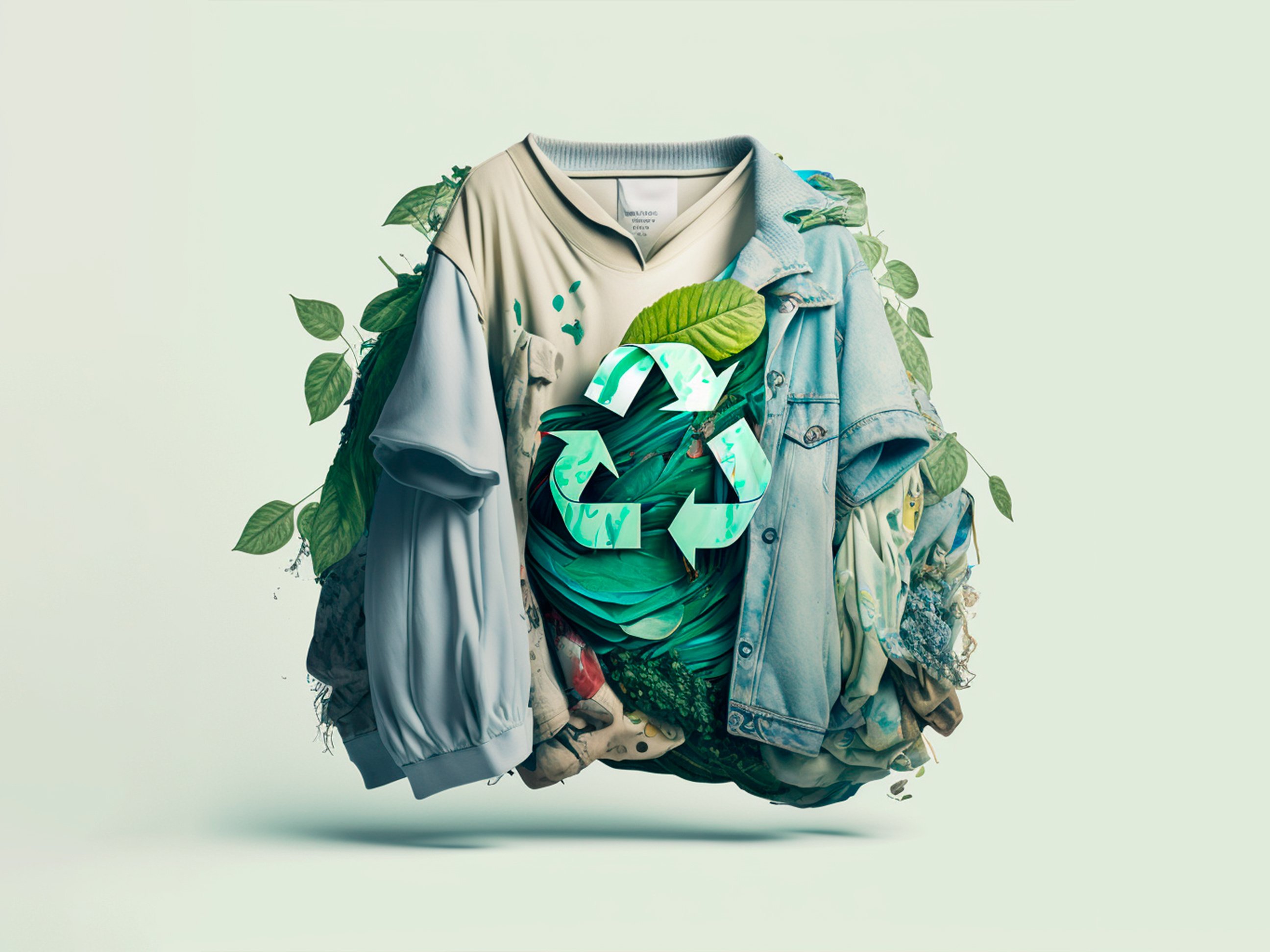Cape Town Sustainable Fashion: Environmentally Friendly Trends to Enjoy
Cape Town Sustainable Fashion: Environmentally Friendly Trends to Enjoy
Blog Article
Keep Ahead of the Curve by Discovering Ingenious Fashion Patterns
In an industry as vibrant as style, staying in advance includes even more than just following present fads-- it demands an expedition of advancement. The merging of innovation and fashion heralds a brand-new age of customer engagement.

Embracing Smart Textiles
Over the last few years, the apparel industry has actually seen a transformative shift with the combination of clever fabrics, a cutting-edge advancement that mixes innovation with material. This evolution stands for not only a fusion of looks and performance yet likewise a considerable jump in the direction of sustainability and customization in style. Smart fabrics, likewise referred to as e-textiles, embed advanced electronics such as sensors and conductive threads within the fabric, allowing garments to communicate with the atmosphere or the user.
These textiles are designed to check physiological specifications, such as heart price or body temperature level, providing real-time wellness analytics. Beyond health applications, smart textiles are also being utilized for flexible clothes, which can transform color or pattern in action to environmental stimulations, thus using a vibrant fashion experience.
Additionally, the growth of energy-harvesting textiles that create power from movement or sunlight is paving the method for self-dependent wearable technology. This development is interesting environmentally conscious consumers and designers aiming to lower the ecological impact of style. As r & d in this field breakthrough, clever textiles are expected to become significantly common, improving the landscape of contemporary style with their multifunctional capabilities.
The Surge of 3D Printing
Transforming the production landscape, 3D printing has actually become a game-changer in the fashion sector. This sophisticated technology has actually enabled designers to push the limits of creative thinking, generating elaborate and personalized garments that were formerly unimaginable. By leveraging electronic style and additive manufacturing, 3D printing assists in the creation of complicated geometries and patterns, allowing developers to explore new structures and structures.
A notable advantage of 3D printing in vogue is its ability to generate on-demand, minimizing waste and decreasing inventory needs. This performance not only optimizes production processes yet likewise permits fast prototyping, making it possible for designers to bring their visions to life in a much shorter timeframe. Moreover, 3D printing sustains modification to a degree unparalleled by conventional methods, using distinct designs and customized fits tailored to specific customer choices.
The surge of 3D printing has also equalized style, making it accessible to arising designers that can now fabricate high-grade pieces without significant monetary investment in standard production infrastructure. As technology continues to advancement, the fashion industry is positioned to harness the full capacity of 3D printing, discovering new materials and techniques that will most certainly redefine exactly how fashion is conceived and produced.
Lasting Style Developments
As the style market grapples with the pushing demand for ecological duty, lasting fashion innovations have arised at the leading edge of transformative change. The expanding awareness of environmental impact has actually sustained a change in the direction of even more eco-conscious practices and products. Designers and brand names are now prioritizing sustainability, including approaches that reduce waste and minimize carbon impacts.
One substantial advancement is the increase of round fashion, which stresses recycling and upcycling to expand the lifecycle of garments. This strategy not only lowers waste however also motivates consumers to take on an extra conscious technique to apparel usage.
An additional development exists in the adoption of cutting-edge dyeing methods that utilize all-natural browse around here dyes or waterless processes, thus reducing the large amounts of water and chemicals traditionally utilized in fabric dyeing. Additionally, improvements in biotechnology have actually led to the development of lab-grown natural leather and fabrics, supplying cruelty-free and try this web-site eco-friendly options to conventional products. Through these pioneering initiatives, the garment industry is making meaningful strides towards a more lasting future.

Tech-Integrated Clothing
Tech-integrated clothing stands for a cutting-edge blend of fashion and innovation, improving how people interact with their clothes. This innovative domain is noted by the inclusion of smart fabrics and ingrained digital components, enhancing both functionality and aesthetic allure. From physical fitness trackers embedded in sports apparel to heated jackets controlled using smartphone applications, tech-integrated garments uses customers unprecedented convenience and versatility.
Pioneering brand names are driving this fad, focusing on producing garments that react to ecological stimulations or user commands. For instance, some garments can transform shade or pattern in action to temperature changes, while others integrate biometric sensing units to check health metrics like heart price or tension levels. The smooth integration of modern technology right into textiles likewise includes environmental sustainability, with initiatives to develop self-cleaning textiles or garments that readjust to weather, hence reducing the requirement for multiple layers.
Furthermore, the advent of wearable technology is not simply limited to clothes yet encompasses devices like watches and glasses, further broadening the scope of tech-integrated fashion. As the market proceeds to introduce, the possibility for customization and customization in apparel grows, providing customers unique, tech-enhanced style experiences that deal with their private requirements and preferences.
Future of Virtual Style
Over the last few years, the future of digital style has actually emerged as a transformative pressure within the sector, leveraging advancements in digital technology to redefine just how fashion is produced, experienced, and taken in. By incorporating increased reality (AR), online fact (VR), and 3D style devices, developers can currently craft immersive and interactive experiences that go beyond conventional style limits. Virtual style enables the production of garments that exist solely in digital environments, using limitless possibilities for innovation without the constraints of physical production.
This digital change not only presents chances for innovative expression but additionally addresses sustainability worries integral in standard fashion methods. Cape Town Sustainable Fashion. By eliminating the demand for physical resources, online fashion minimizes waste and reduces carbon impacts. Furthermore, the surge of online style straightens with the boosting consumer demand for special and personalized experiences, as digital garments can be tailored and customized to specific choices redirected here effortlessly

Verdict
The style industry's future lies in the integration of innovative innovations and lasting techniques. Virtual fashion is positioned to redefine customer interactions.
In current years, the style industry has observed a transformative change with the combination of wise textiles, a sophisticated innovation that mixes technology with material.As the fashion industry grapples with the pressing requirement for environmental duty, sustainable style technologies have arised at the forefront of transformative change.In current years, the future of digital style has emerged as a transformative force within the industry, leveraging innovations in electronic technology to redefine exactly how fashion is developed, experienced, and consumed. The increase of online fashion lines up with the increasing consumer need for personalized and special experiences, as online garments can be personalized and customized to specific choices with convenience.
The fashion industry's future lies in the combination of sustainable methods and cutting-edge modern technologies.
Report this page